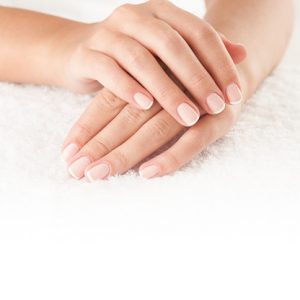
Pale nails: Fingernails that are very pale or have a whiteish hue may be the result of aging or could be a sign of a more serious condition such as anemia, congestive heart failure, liver disease, or malnutrition. If they are very white, it may be attributed to liver issues such as hepatitis.
Yellow nails: Nails may become yellow due to smoking or a fungal infection, though in rare instances, these yellow nails may be indicative of thyroid disease, lung disease, diabetes, or psoriasis.
Blue nails: If your nails have taken on a bluish color, it may be due to the body not getting enough oxygen, which can indicate an issue with the lungs. Chronic obstructive pulmonary disease (COPD), pneumonia, or heart failure may be the underlying cause of your bluish nails.
Rippled or pitted nails: Just as changes in color can be a warning sign of underlying health issues, changes in the texture of your nails can also reveal clues about the state of your health. Rippled or pitted nails may be an early symptom of psoriasis or inflammatory arthritis, while vertically ridged nails can occur simply from aging.
Dark lines beneath the nails: The appearance of dark lines or streaks under the nail may be caused by melanoma and should be examined by a medical professional as soon as possible.
Bitten nails: While you may bite your nails simply out of habit, persistent biting or picking of your nails and nail bed may be a symptom of an underlying mental health condition. Anxiety and obsessive-compulsive disorder have both been linked to excessive and habitual nail biting.
Your nails may be trying to tell you something based on their strength, color, or texture. While most nail conditions may have a harmless explanation, such as natural aging, it is important to get them checked out by your doctor if you are concerned that they may be indicative of a more serious underlying condition.
Related: Brittle toenails: Causes and home remedies